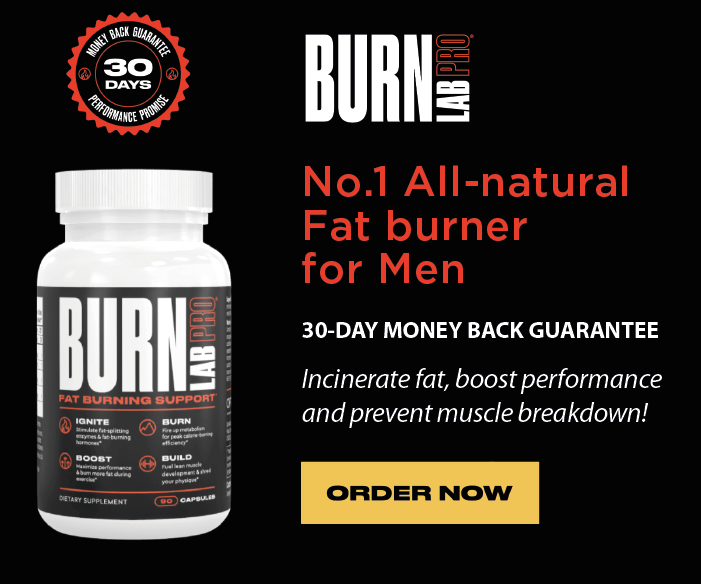Lean Bulking for the Endomorph: More Muscle, Less Fat
By Martin Ebner, Head PT and sports nutrition specialist at Ebylife
If you read my blog "The Mesomorph Series: The Ultimate Lean Bulk Plan," you learned that mesomorphs are athletic, with a rectangular shape and upright posture, are generally not overweight or underweight, and they can gain or lose weight without too much effort. Oh, and that Dr. William Sheldon, an early proponent of "somatotypes," believed that mesomorphic people are more prone to aggression, but lack sensitivity and inhibition, which leads to delinquency and criminal behavior.
If you're an endomorph, like Tom Hardy or Jennifer Lopez, I've got good news and bad news. The bad news is that, in general, you're as likely to gain body fat as you are muscle mass. The good news is that Dr. Sheldon believed that endomorphs have a tendency toward a “viscerotonic” personality: relaxed, comfortable, and extroverted. He believed you may be a little lazy, but at least you're not a criminal! PHWEW!
The Three Body Types
The three most common body types, or "somatypes," are ectomorph, mesomorph, and endomorph. They are broad generalizations which can be used as a guide to designing effective, personalized workout routines and meal plans.
Ectomorph: Ectomorphs are long, wiry, and slender, generally finding it difficult to gain muscle mass. This body type tends to have a high metabolism and are often fashion models, basketball players, and professional swimmers.
See: The Skinny Guy Series: How to Maximize Muscle Building
Mesomorph: Mesomorphic bodies are athletic, solid, and strong. When viewing a chart of the three body types, the mesomorph is usually pictured in the middle, their rectangular shape and upright posture positioned between the skinny ectomorph and the rounder, stockier endomorph. As mentioned above, they can readily gain or lose weight.
See: The Mesomorph Series: The Ultimate Lean Bulk Plan
Endomorph: The endomorph body type tends to have higher levels of body fat, build muscle easily, and gain weight easily. Think heavy-weight boxers like Mike Tyson and American Football linemen. They're usually heavier and rounder people, but aren't necessarily overweight.
Still not sure which body type you are? See our article: Male Body Types: How best to train, eat and supplements for your body type
Easy-gainer
The svelte (skinny) ectomorph is often referred to around the gym as a hardgainer. A hardgainer is a person who practices bodybuilding but finds muscle-building difficult. For them, it's challenging to develop muscle mass regardless of the amount of effort put in. I've said previously that I don't really like the term "hardgainer," as it sounds demeaning and a bit inappropriate! Well, I'm not sure if easy-gainer is much better but definitely better than hard-loser, so there you have it.
Endomorphs are sometimes called easy-gainers because they gain bodyweight easily. Unfortunately, their muscle gain is usually matched by fat gain. If an endomorph were to follow the ectomorph's "hardgainer" diet, they would gain weight all right, but a lot of it would be fat. Endomorphs need to find a dietary and training program that allows them to build lean muscle mass while avoiding adding excess fat to reach their fitness goals.
Endomorphs may also be "skinny fat." That means that they have a reasonable Body Mass Index (BMI), but do not have good muscle definition. They may not look fat, but they're not toned either. Most likely, those around a skinny-fat person would not describe them as being out of shape. When fully dressed, a skinny-fat endomorph looks reasonably fit. However, if their goal is more than just not being fat, an endomorph may find it frustrating to add pounds of muscle and not just pounds of body weight.
What is Bulking?
Bulking is a term commonly used by bodybuilders. It refers to the extra calories consumed beyond your body’s basic needs in combination with intense weight training. Bulking is the muscle-gaining phase of a long-range bodybuilding regimen. One gradually increases their caloric intake for a specified time period, generally four to six months. These extra calories provide the body with the necessary fuel to boost muscle mass and strength while weight training. Some critics say that bulking is unhealthy, but I recommend it to my personal training clients when appropriate for their fitness goals. I believe it’s a safe and effective method for gaining muscle mass.
To Bulk or Not to Bulk…
...that is the question. Whether 'tis nobler in the mind to suffer the cravings and growls of outrageous hunger, or to eat armfuls o' grains and a sea of peach cobbler... (Apologies to Mr. Shakespeare!)
Bulking is safe, but there are limits to how effective it can be. Since the body builds muscle mass most efficiently when it's at its leanest, you'll want to be sure your body fat percentage is relatively low. That's because one's body composition affects one's insulin sensitivity. High insulin sensitivity allows the cells of the body to use blood glucose more effectively. This means that the glucose circulating around your body is more likely to be used for fuel rather than stored for later use as body fat.
You're far more insulin sensitive when you're carrying less body fat which is why bulking is not such a good idea if you're an endomorph in need of weight loss. Men should strive to have less than 12 percent body fat before bulking, women less than 24 percent. You can use this handy calculator to estimate your body fat percentage.
If you're over these percentages, your best bet is to begin with a weight loss phase and up your cardio workouts. Once you've gotten leaner, then transition into a bulking phase. This will enhance insulin sensitivity and muscle-building efficiency when you up your calorie intake and increase your strength training.
Down and Dirty Bulking
Speaking of inappropriate terms, one that makes me shake my head is "Dirty Bulking." (Decorum prevents me from saying what I think it sounds like, but you can speculate!) Dirty bulking simply means eating anything and everything. And believe it or not, it really is a term thrown around the bodybuilding world! However, if you're an endomorph, you know what dirty bulking gets you: excess fat.
A classic example of dirty bulking is when an actor needs to gain weight for a role. The record holder for dirty bulking for a movie is held by Vincent D'Onofrio who gained 70 pounds to play "Private Pyle" in Full Metal Jacket. His breakfast alone consisted of a steak, several eggs, a half loaf of bread, and a quart of milk. And like a true endomorph, he packed it on everywhere. He says that even his nose got fat!
Dirty bulking may be effective in providing the calories for muscle growth, but its side effects include excess fat gain, feeling sluggish, high cholesterol, and high blood sugar levels. Lean bulking, on the other hand, is a strategy of carefully increasing one's calorie intake and protein intake with the goal of gaining muscle mass without getting fat.
A Lean Bulk is a Clean Bulk
I suppose we call it clean bulking because it's the opposite of dirty bulking? Sounds a bit pretentious to me though. "No thank you, I would not like any chips or unhealthy snacks, I'm clean bulking!" Also, when I hear the words lean and clean together, I can't help picturing my grandma. So for the rest of this blog, I'll be using the phrase "lean bulking."
I actually do prefer the term "lean bulking" because it sounds like what it is: adding calories to increase lean muscle mass. When bulking the goal is to increase the caloric intake to promote muscle growth. A lean bulk focuses on a slow weight gain where the protein intake stays roughly the same and the additional calories mainly come from carbs.
Some might refer to lean bulking as reversed dieting. This is not far from the truth. If you read my recent blog on reverse dieting, you know that the body may go into a kind of "slow-down" mode if it doesn't get enough calories and thinks there is a food shortage. If one is working, working, working, but not taking in much fat or carbohydrates, the body's starvation mode kicks in. During this "metabolic adaptation," metabolic rates slow down, and the pathways for burning fat are curbed. If instead, one focuses on resistance training, limits cardio, and keeps a healthy balance of the macros (healthy fats, carbs, and protein), the body does NOT go into starvation mode.
Reverse dieting is a more general term and can be applied to those who are dieting and frustrated when the scale "gets stuck" on a certain number. Keep in mind that fat loss is not the focus when bulking. The goal is to gain muscle. Naturally, as an endomorph, you can expect that some fat may be gained when you eat more calories than you burn. But if you plan well, get the proper amount of protein, and are purposeful with your caloric surplus, you can lean-bulk your way to the body composition you want.
How to Lean Bulk
If you read my recent reverse-dieting blog, you may recognize this approach. But as I said, reverse-dieting and lean-bulking are not dissimilar. However, let me say this upfront, lean-bulking requires planning, tracking, and discipline. You're going to be increasing your calorie intake without running a calorie surplus. Remember Easy Gainer, a calorie surplus is not going to magically turn itself into muscle tissue!
1. Establish your maintenance calories. Healthline.com has a handy calculator for estimating the number of calories you need for your daily functioning.
2. Add on a 10% calorie surplus. For example, if for your age, height, weight, gender, and activity level ("very active" if you're bodybuilding) you need 3000 calories per day, you would add 300 calories. Ensure a daily protein intake of 1 gram per pound of body weight (2.2 grams of protein per kg) to support muscle gain. Split the rest of your calories between carbs and healthy fats.
3. Engage in a program of lifting weights. If you're just starting out, it's a good idea to consult a professional trainer. You'll want to increase your efforts slowly to reach your fitness goals. This "progressive overload" calls for the gradual increase of the stress placed upon your muscles.
4. Include Some Cardio. There are many schools of thought about cardio and bodybuilding. How much cardio? Before or after strength training? High intensity or steady-state? These are all things that a professional trainer can help you with. The importance of cardio is often downplayed when bodybuilding. However, as an endomorph adding extra calories, you want to be sure to minimize excess fat. When Lean bulking, aim to perform moderate-intensity cardio either after each weight training session and/or if that doesn’t suit, on your days off. This will help promote cardiovascular fitness and, if you hit the weights hard enough, will help shed body fat.
See also: Cardio Vs Strength Training: Before, After, or Separate Days?
5. Track Your Changes: Once every week or two, weigh yourself in the morning, after urinating, and before eating or drinking anything. I would also suggest measuring, taking photos, and recording in a logbook how you’re feeling in terms of your body composition and energy levels. Especially measure your waist, chest, thigh, and bicep circumferences. These are trackable signs of your progress and indicate if you are having a successful lean bulk.
What to Eat
Lean proteins: chicken, fish, turkey, beef, pork, Greek yogurt, cottage cheese, reduced-fat cheese, protein powders, tofu and tempeh, and eggs and egg whites.
Healthy fats: olive oil, avocado, nuts, nut butters, fatty fish, and seeds like chia, hemp, and flax seeds.
Legumes: all beans, including chickpeas and kidney, navy, black, and great northern beans.
High-quality carbs: oats, quinoa, whole grain pasta, white and sweet potatoes, and white and brown rice, whole grains.
Fruit: apples, oranges, bananas, pineapple, grapefruit, and all types of berries.
Non-starchy vegetables: peppers, asparagus, green beans, mushrooms, onions, tomatoes, zucchini, carrots, and celery.
Cruciferous veggies: broccoli, cauliflower, Brussels sprouts, and cabbage.
Dark leafy greens: spinach, Swiss chard, collard greens, and kale.
Beverages: water, seltzer, tea, coffee, and kombucha
Foods to Limit or Avoid
Highly processed foods: fried foods, canned soups and stews, sugary cereals, chips, fast food, and full fat ice cream, plus packaged pastries, cakes, and cookies, and processed meats like bacon, sausage, ham, salami, and pâté
Proteins: fatty cuts of beef or pork, as well as processed pork or beef sausage
Saturated fats: margarine, butter.
Beverages: soft drinks, sweetened coffee, sweet tea, lemonade, and other sugary drinks
Weight Training & Cardio Program:
For an excellent and much more detailed article on this subject, check out Bulking For Endomorphs - Gaining Muscle While Limiting Fat Gains. The author's recommended weekly workout is below:
Monday: 45-60 minutes Weight Training followed by 30 minutes of Low-moderate Intensity Cardio (optional)
Tuesday: 45-60 minutes Weight Training followed by 30 minutes of Low-moderate Intensity Cardio (optional)
Wednesday: 60 minutes moderate-Intensity Cardio or 15-20 minutes of High-Intensity Cardio
Thursday: 45-60 minutes Weight Training followed by 30 minutes of Low-moderate Intensity Cardio (optional)
Friday: 45-60 minutes Weight Training followed by 30 minutes of Low-moderate Intensity Cardio (optional)
Saturday: 60 minutes moderate-Intensity Cardio or 15-20 minutes of High-Intensity Cardio
Sunday: Rest day! Allows your body to assimilate all that hard work!!




